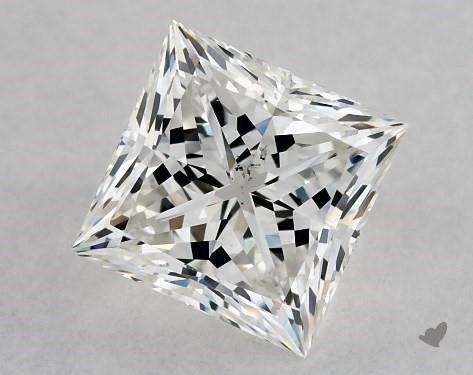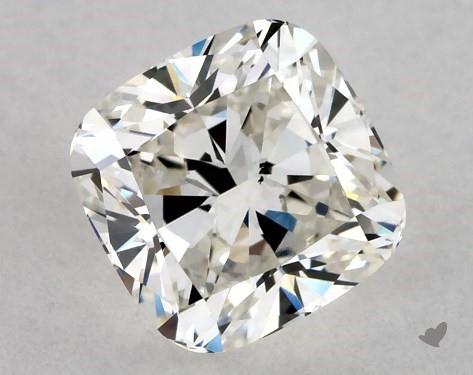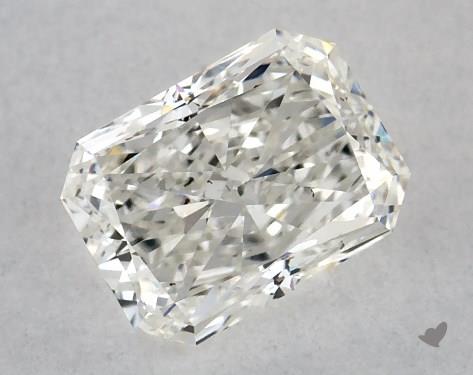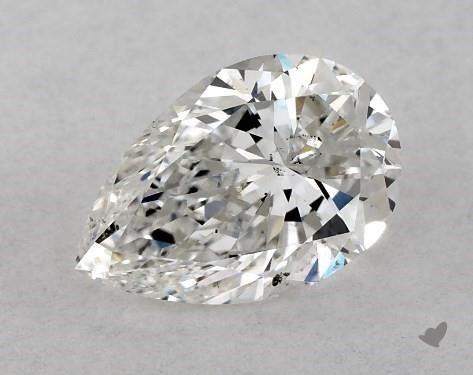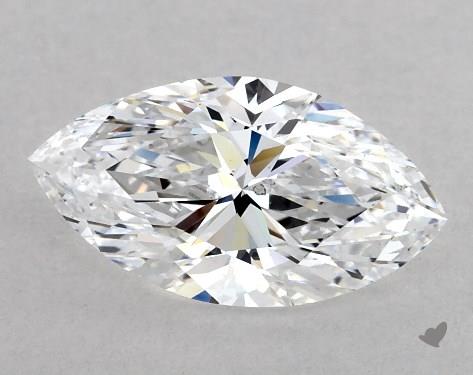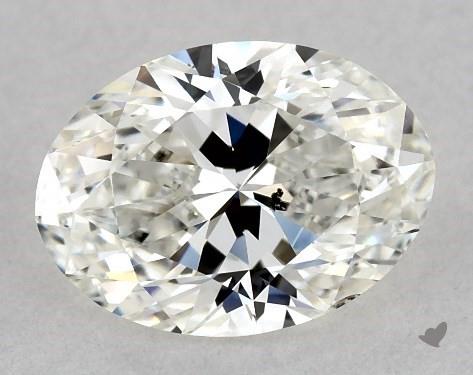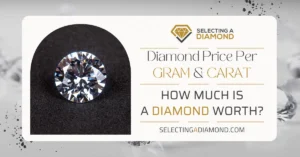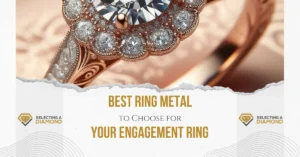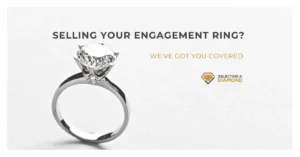We may earn a commission when you purchase through our affiliate links, at no extra cost to you. This helps support our work and allows us to continue providing unbiased, expert diamond advice.
Nothing can symbolize your long-lasting love as a diamond could. Its beauty, durability, and brilliance summarize your love story and are the perfect symbol for the new life you’re beginning with your loved one.
The diamond shape is the question you should be asking next, which shape will work best for you, which one matches your style and fits your preferences?
After all, a diamond is an investment, and you want to make sure you’re investing your money in something you adore and appreciate.
In this article we will explore in deep detail every diamond shape in the market and who would love this shape.
How to Choose Diamond Shape: 8 Best Trendy Cuts for Your Ring
The Round Brilliant-cut Diamond
Perfected by Marcel Tolkowsky in the early 20th century the round brilliant diamond cut became the most sought-after for its light performance.
The Round Brilliant cut typically has 57 or 58 facets (including the culet) and is designed to produce the greatest levels of fire, brilliance, and scintillation. This cut is engineered to be exceptionally forgiving of certain types of diamond clarity imperfections because the complex faceting can hide certain inclusions and blemishes better than other cuts.
It’s perfect for individuals who are looking for the utmost sparkle in a diamond and desire a classic look that will stand the test of time.
Its versatile shape complements virtually any ring setting and works well with various personal styles.
If you’re making your engagement proposal a surprise this cut is a safe choice if you’re not sure about your fiancee’s taste in jewelry.
The Princess-cut Diamond
The princess-cut diamond is a relatively new diamond-cut developed by A. Nagy of London in 196. It offers a modern alternative to the round brilliant cut that could still maximize a diamond’s fire and brilliance.
The Princess cut is known for its sharp, uncut corners and typically square shape, although some are slightly more rectangular. It is traditionally a square version of the more complex “brilliant” cut pattern used for round diamonds, and it typically has 57 or 76 facets, allowing for significant light dispersion, comparable to a Round Brilliant cut. The Princess cut is second in popularity among diamond cuts, presenting a face-up shape as square or rectangular and side-on as an inverted pyramid.
If you want a modern diamond that still maximizes the brilliance and fire of the diamond then the princess cut is the perfect choice for you. Its clean lines and symmetrical shape appeal to those with a contemporary taste in jewelry.
If you decide to go with the princess cut you need to know that its corners can be prone to chipping if not properly set or protected, the best setting for the princess cut is the four-prong setting. This type of setting is specifically designed to protect the four corners of the Princess cut, which are the most vulnerable to chipping. Each prong covers a corner, providing security and minimizing the risk of damage to the diamond.
The Cushion-cut Diamond
The Cushion cut is a blend of the Old Mine Cut (popular in the late 19th and early 20th centuries) and the modern oval cut, and it was the de facto diamond shape until the early 20th century when the round brilliant cut gained popularity.
Cushion-cut diamonds are known for their rounded corners and larger facets, which increase their brilliance and highlight the diamond’s clarity. The classic Cushion cut has a soft square or rectangular shape, with sides that are not as straight as the Princess cut.
It is characterized by its rounded edges and the pillow-like appearance from which it gets its name. The cut typically has 58 facets, which are larger than those found in a round brilliant cut, giving it a distinctive, romantic appearance with a vintage feel.
The Cushion-cut diamond is perfect for someone who is drawn to a vintage aesthetic but still wants a stone that radiates light well. It is often chosen by those looking for an alternative to the round cut that still maintains a soft and classic look.
A higher color grade may be necessary to achieve the same colorless appearance for a cushion cut as it tends to retain more color than round or princess cuts.
The Emerald-cut Diamond
The Emerald cut has a history that dates back to the 1500s, originally developed for cutting emeralds, hence the name. It was adapted for diamonds and gained popularity during the Art Deco period of the 1920s and 1930s. The clean lines and symmetry of the Emerald cut echoed the architectural and stylistic movements of the time, emphasizing geometric forms and straightforward elegance.
The Emerald-cut diamond is known for its distinctive step cuts, which create a hall-of-mirrors effect, rather than the sparkle typically found in the more common brilliant cuts.
It has a rectangular shape with cut corners that resemble stair steps when viewed from above. This cut typically features a large, open table (the largest facet of the stone), and its long lines give it a sophisticated and elegant appearance. Emerald cuts vary in their length-to-width ratios, with some being almost square, while others are more elongated rectangles.
The Emerald cut is perfect for someone with a taste for understated, classic elegance and who values clarity over the brilliance of a diamond. The unique cut highlights the diamond’s clarity, making it a great choice for high-quality stones. It’s often chosen by those who appreciate a more subtle sophistication and a vintage appeal, as the cut has a timeless quality that does not go out of style.
The Emerald cut tends to show imperfections and color more readily than other cuts due to the larger, open table and fewer facets. This means that higher clarity and color grades are often more desirable, which can increase the cost. Inclusions are more visible, which requires careful selection of the stone for quality.
The Radiant-cut Diamond
The Radiant-cut diamond is a relatively new addition to the world of diamond shapes. It was designed in 1977 by Henry Grossbard, a master diamond cutter, who wanted to combine the best aspects of the round brilliant cut and the emerald cut.
Radiant-cut diamonds are known for their trimmed corners and complex facet pattern which gives them a vibrant and lively appearance. They can be square or rectangular and have 70 facets, allowing them to capture a great deal of light and spark intensely.
The cut is designed to retain the maximum amount of color, which makes it an excellent choice for fancy-colored diamonds as well as traditional clear stones.
The Radiant cut is ideal for someone who loves the fire of a round brilliant diamond but wants a more unique shape. It’s also a good choice for those who appreciate the geometric lines of an emerald cut but desire more sparkle.
Because of the cut’s complexity, it can be difficult to find a well-cut Radiant diamond, and poor cutting can result in a loss of brilliance. Additionally, the Radiant cut can be less forgiving of inclusions compared to step cuts like the Emerald cut, which means clarity is also an important consideration.
The Pear-cut Diamond
The Pear-cut diamond, also known as the “teardrop” diamond due to its single point and rounded end, has a history that traces back to the 1400s. Its creation is generally credited to Flemish polisher Lodewyk van Bercken.
Pear-cut diamonds are distinguished by their single point and rounded end, with a typical configuration of 58 facets, allowing for ample light reflection and brilliance. This cut is designed to combine the best aspects of round and marquise shapes, and it’s typically worn with the point directed toward the hand of the wearer.
The Pear cut can vary in its exact shape; some are wider or more elongated, while others are more balanced. When well-cut, a Pear-shaped diamond displays excellent fire and brilliance.
The Pear cut is perfect for someone looking for a unique diamond shape that can slim and elongate the fingers due to its tapered point. It is also well-suited for those who appreciate a bit of vintage charm, as the cut has a classic yet distinctive profile.
One of the main issues with the pear-cut is the potential for a “bow-tie” effect, a dark area that can appear across the center of the diamond due to light blockage. Additionally, the pointed end of the Pear cut can be prone to chipping and requires protective setting designs.
The Marquise-cut Diamond
The Marquise-cut diamond, also known as the “navette” cut, which means “little boat” in French because of its boat-like shape, has a rich history that dates back to the 18th century. It is believed to have been commissioned by King Louis XV of France, who wanted a diamond to resemble the lips of his mistress, the Marchioness Madame de Pompadour.
The Marquise cut is known for its elongated shape with pointed ends, which is not only distinctive but also helps to maximize carat weight, giving the illusion of a larger diamond.
It typically has 56 to 58 facets that can produce a large amount of sparkle when the diamond is well-cut. The length of the Marquise cut can also make fingers appear longer and more slender, which is a desirable effect for many.
The Marquise cut is perfect for someone who is looking for a dramatic and unique diamond cut that maximizes size and sparkle. It is often favored by those who have an appreciation for vintage styles and want a stone that makes a statement.
The elongated shape is also ideal for someone looking to create the illusion of longer, more slender fingers.
One of the disadvantages of the Marquise cut is that the pointed ends are prone to chipping and require protective settings, such as V-tip prongs. The Marquise cut is also more likely than other shapes to exhibit the “bow-tie” effect, a dark area in the center of the diamond that results from light blockage. This effect can vary from nearly invisible to quite prominent, depending on how the diamond is cut.
The Oval-cut Diamonds
The Oval-cut diamond is a relatively modern cut, having been created by diamond cutter Lazare Kaplan in the late 1950s or early 1960s. Kaplan’s innovation came after the Round Brilliant cut and was developed to combine the brilliance of the Round cut with a more unique shape.
The Oval-cut diamond is a modification of the Round Brilliant cut and has similar fire and brilliance. It is known for its elongated shape, which can create the illusion of greater size compared to a round diamond of the same carat weight.
The Oval cut typically has 56 to 58 facets, and its elongated shape can also make the wearer’s finger appear longer and slimmer. This cut is versatile and can vary in its length-to-width ratios, allowing for a range of appearances from slim to wide ovals.
The Oval cut is perfect for someone looking for the brilliance of a round diamond with a more distinctive shape. Its elongated form can be a flattering choice for those looking to elongate their fingers.
It’s also ideal for those who desire a larger-looking diamond for the same carat weight and enjoy classic, yet slightly unconventional, diamond shapes.
The Trillion-cut Diamonds
The Trillion-cut diamond, also known as the Trielle cut, is a relatively modern cut that was developed in the 1960s. This cut was originally created by the Asscher brothers in Amsterdam, and it was later trademarked in 1962 by the Henry Meyer Diamond Company of New York.
The Trillion cut was initially intended as an accent stone to complement larger, more traditional cuts but has since gained popularity as a main stone due to its unique and dramatic appearance.
The Trillion cut is a triangular shape with equal sides and typically features curved or straight edges, depending on the specific design. It usually has between 31 and 50 facets, which can create a spectacular fire and brilliance that is quite different from other diamond cuts.
The cut is distinguished by its sharp, geometric lines and, when well-executed, offers a great deal of surface area for its weight, often appearing larger than other diamonds of the same carat.
The Trillion cut is perfect for someone looking for a unique and modern diamond shape that stands out. Its contemporary look and brilliance make it suitable for those who want a statement piece that catches the light and the eye.
It is also an excellent choice for side stones to flank a larger central diamond due to its ability to blend well with different shapes and its distinctive geometric style.
One of the disadvantages of the Trillion cut is that its pointed corners can be prone to chipping or breaking if not protected properly by the setting.
Also, because of its unique shape and faceting pattern, the Trillion cut may show color and inclusions more readily than other cuts, which means higher clarity and color grades may be necessary for an eye-clean appearance.
Conclusion
A diamond is more than just a piece of jewelry, it’s a symbol. Diamonds are one of the most durable materials on Earth, and this durability is the perfect symbol for your love.
Diamonds are also an investment, and making sure you pick the right choices is the number one priority when shopping for a diamond.
Make sure to pick a diamond that fits your style and preferences and make sure to overcome its pitfalls because every type of diamond has a disadvantage.
Still not sure where to buy your diamond?
We always recommend shopping diamonds online and created a Full guide to shop diamonds like a Pro.
Among online retailers, here are our favorite stores click their logo to visit store
-
James Allen:
Our favorite online store, best diamond imaging technology available today, comes with the largest collection with more than half a million loose diamonds.
-
Blue Nile:
Widest collection of loose diamonds of all sizes, great imaging technology for most of their inventory (hundreds of thousands of diamonds), great customer support.
-
Whiteflash:
Home Of A CUT ABOVE® Super Ideal Diamonds, they stand out from the crowd by offering premium diamonds cuts, tailored to those who love the details, at great prices too.




